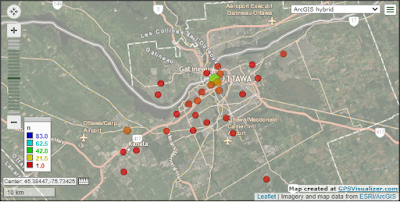CIPO’s online trademark database does not expose trademark agent details as searchable fields. To investigate such details one must use CIPO’s .xml data, as I will demonstrate in this post.
As of 22-Mar-2021:
- The Canadian trademark register, as embodied in CIPO's online trademark database—and in CIPO’s trademark .xml data—contained details of 1,773,357 marks.
- 854,839 of those marks (48.2%) were active; the remaining 918,518 (51.8%) were inactive.
- A trademark agent had been appointed in respect of 706,871 (82.7%) of those active marks; no agent had been appointed in respect of the remaining 147,968 (17.3%) active marks1.
- A total of 1,202 different trademark agents had been appointed—one agent per mark—in respect of those 706,871 active marks2. (Some agents are appointed in respect of tens of thousands of different marks.)
- CIPO's List of Trademark Agents identified 1,965 agents3 including both individuals and firms and also including 48 non-resident agents.
If you inspect any one of CIPO’s .xml files for those 706,871 active marks for which an agent had been appointed, you will find that the file contains a tmk:NationalRepresentative element similar to this one from application no. 2093796 which was filed on 22-Mar-2021 by the well known Toronto law firm Piasetzki Nenniger Kvas LLP (click to enlarge the image):
As can be seen, the tmk:NationalRepresentative element encapsulates name and address details pertaining to the trademark agent currently appointed in respect of the application. This element is not exposed as a searchable field by CIPO’s online trademark database. To investigate this element one must use CIPO’s .xml data.
The postal code portion of the appointed agent’s office address is separately encapsulated within the tmk:NationalRepresentative element, e.g. <com:PostalCode>M5H1T1</com:PostalCode> in the above example. The first 3 characters of a Canadian postal code constitute the so-called Forward Sortation Area (FSA). It is relatively straightforward to query a database4 containing details of all 1,773,357 marks on the Canadian trademark register (as of 22-Mar-2021) to obtain an ordered list of Forward Sortation Area frequency counts corresponding to the office addresses of agents currently appointed in respect of the aforementioned 706,871 active marks. That query returns 345 rows. This means that the office addresses of the 1,202 different trademark agents currently appointed in respect of the aforementioned 706,871 active marks are distributed over 345 unique FSAs. Here are the first 10 of those 345 rows:
Some geocoder apps are capable of converting FSAs to latitude / longitude coordinates and plotting same on a map. The Google Maps Platform is one example. Plugging the 'M5H' FSA into that geocoder yields 43.650571 / -79.384567 as the latitude /longitude coordinates and shows us that those coordinates correspond to the Richmond-Adelaide Centre business district of downtown Toronto (click to enlarge the image):
An app such as GPSvisualizer can be used to geocode a batch of FSAs. If the FSAs are accompanied by frequency counts (e.g. as seen in the two leftmost columns of the query results tabulated above) then a quantitative map can be obtained. Here for example is a quantitative map based on the aforementioned 345 unique FSAs (click to enlarge the map and note the quantization legend in the lower left):
GPSvisualizer lets us zoom in on any part of the map. Here for example are quantitative maps showing (left-to-right and top-to-bottom) agent office FSA density distributions for the Toronto, Montreal, Ottawa and Vancouver areas respectively (click to enlarge each map):
Keep in mind that these maps plot the number of agent offices per FSA, which is not the same as the number of individual agents per FSA.
Experienced practitioners may surmise that it would be interesting to do similar plots for mark owners. I will explore that in a future post.
1 This includes 23,702 active Madrid filings—many such filings do not appoint an agent.↩
3 For various practical reasons, most agents who practice within firms appoint the firm—not any individual agent(s)—in respect of any and all marks handled by such agents. This largely explains why many more agents appear on CIPO's List of Trademark Agents than have been appointed in respect of all of the active marks on the register. Other reasons include: some agents have been appointed only in respect of marks which have become inactive; some agents have retired but keep their agent registration active; etc.↩
4 I have built such a database.↩








